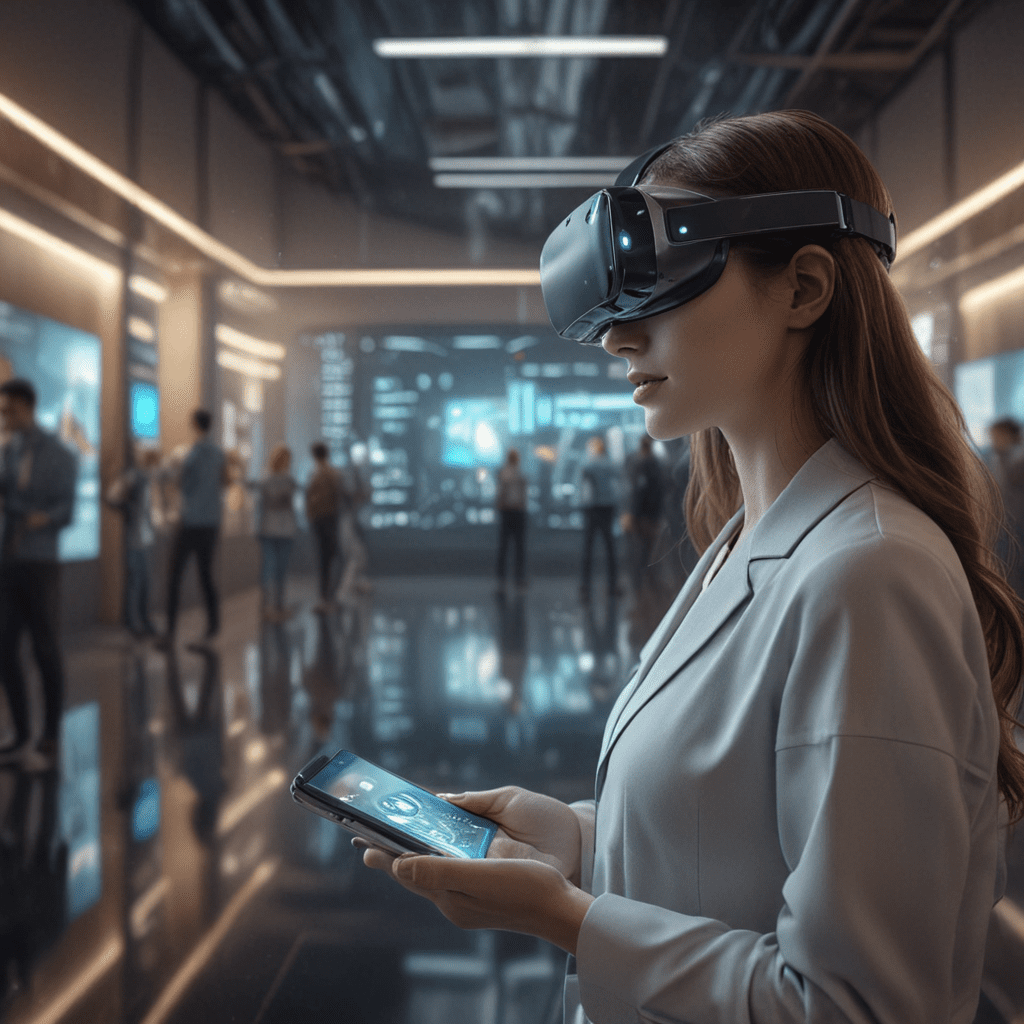
1. Introduction
Augmented reality (AR) is revolutionizing the way we interact with the world around us. One of the most exciting developments in AR has been the emergence of virtual assistants. These AI-powered assistants provide hands-free assistance, allowing users to access information, control devices, and complete tasks with just their voice or gestures.
2. Definition of Virtual Assistants
Virtual assistants are software agents that can understand natural language and perform tasks on behalf of users. They are designed to be helpful, informative, and efficient, providing a seamless and personalized user experience.
3. Evolution of Virtual Assistants in AR
The integration of virtual assistants with AR has unlocked new possibilities. Early virtual assistants were limited to providing basic information and controlling smart home devices. However, with the advancements in AR technology, virtual assistants can now overlay digital information onto the real world, revolutionizing how we interact with our surroundings.
4. Key Features of AR Virtual Assistants
AR virtual assistants possess several key features that enhance their functionality:
- Spatial Awareness: They can understand their surroundings and interact with physical objects.
- Contextual Understanding: They can adapt their responses based on the user's location and context.
- Gesture Control: They can respond to hand gestures, allowing for hands-free control.
- Visual and Auditory Feedback: They provide both visual and auditory feedback, making interactions more intuitive.
5. Applications in Various Industries
AR virtual assistants have found applications in various industries, including:
- Education: Providing interactive learning experiences and personalized tutoring.
- Healthcare: Assisting with medical procedures, providing remote patient monitoring, and enhancing patient engagement.
- Manufacturing: Streamlining assembly processes, providing real-time instructions, and improving safety.
- Retail: Offering personalized shopping experiences, providing product information, and enabling virtual try-ons.
6. Benefits and Advantages
AR virtual assistants offer numerous benefits:
- Improved Efficiency: They automate tasks and provide quick access to information, saving time and effort.
- Enhanced Accessibility: They make technology more accessible to individuals with disabilities or limited mobility.
- Personalized Experiences: They adapt their responses based on user preferences and context, providing a tailored experience.
- Reduced Cognitive Load: They handle information retrieval and task execution, freeing up cognitive resources for more complex tasks.
7. Integration with Wearable Devices
AR virtual assistants can be seamlessly integrated with wearable devices such as smart glasses and wristbands. This allows users to access information and control devices hands-free, while maintaining an immersive AR experience.
8. Challenges and Limitations
Despite their potential, AR virtual assistants also face some challenges:
- Accuracy and Reliability: Ensuring accurate and reliable information and task execution is crucial.
- Privacy and Security Concerns: Protecting user data and ensuring privacy is paramount.
- Cognitive Overload: Balancing the amount of information presented to avoid overwhelming users is essential.
- Cost and Accessibility: Making AR virtual assistants affordable and accessible to all is a key consideration.
9. Future Trends and Advancements
The future of AR virtual assistants holds exciting developments:
- Enhanced AI Capabilities: Advancements in AI will enable more intelligent and intuitive assistants.
- Personalized User Experiences: Assistants will become even more tailored to individual needs and preferences.
- Integration with Haptic Technology: Haptic feedback will enhance the immersive experience and provide more natural interactions.
- Extended Reality (XR): AR virtual assistants will play a pivotal role in the convergence of AR, virtual reality (VR), and mixed reality (MR).
10. Conclusion
AR virtual assistants are revolutionizing the way we interact with the world around us. They provide hands-free assistance, enhance accessibility, and offer personalized experiences. As technology advances, AR virtual assistants will become even more intelligent, accessible, and integrated with our daily lives, transforming the future of AR.
FAQ
Q: How do AR virtual assistants work?
A: AR virtual assistants use AI and computer vision to understand the user's environment and respond to their requests.
Q: What are the benefits of using AR virtual assistants?
A: AR virtual assistants can improve efficiency, enhance accessibility, provide personalized experiences, and reduce cognitive load.
Q: What are the challenges associated with AR virtual assistants?
A: Some challenges include ensuring accuracy and reliability, addressing privacy and security concerns, avoiding cognitive overload, and making them affordable and accessible.
Q: What are the future trends for AR virtual assistants?
A: Future trends include enhanced AI capabilities, personalized user experiences, integration with haptic technology, and a role in the convergence of XR.


